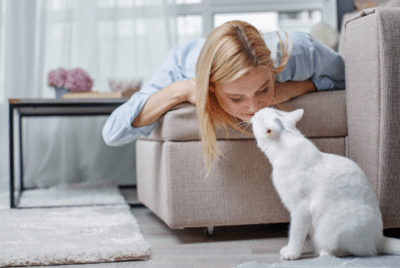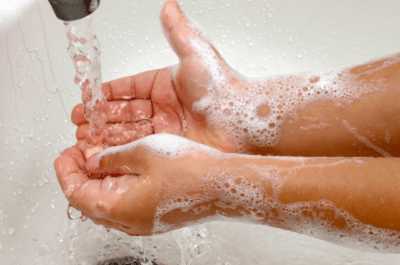
How to keep your home healthy
Living in a clean environment can reduce the risk of infection from the flu, salmonella, mold, dust mites, mice and other indoor contaminates. A healthy home is a clean and dry home that is properly ventilated. The following are the basics for a healthy home environment.
Anything we touch after entering our home each day we should clean with a disinfectant. You can use soap, chlorine, alcohol, vinegar, peroxide and so on depending on the surfaces you are cleaning and your personal preferences. These surfaces should be cleaned daily. The use of cleaners with perfumes are discouraged.
Bathrooms and washing areas should be cleaned with a strong disinfectant after each use. Chlorine is useful on all porcelain and fiberglass surfaces such as showers, tubs, toilets and sinks. Pour one cup of chlorine in the sink drains to fill the p-traps and one cup of chlorine into the toilet holding tank. If you are on a septic system which might be damaged with chlorine, use an approved disinfectant for septic systems.
All hard surfaces should be cleaned once a week or more. Hard to reach places such as inside cabinets, behind refrigerators, under ovens can wait a little longer between cleaning. But anything you see with your eyes should be cleaned weekly which also includes windows and all horizontal flat surfaces. Any contact surfaces such as counters, doors, windows, handrails throughout the house should be cleaned daily if used or touched.
All fabrics should be vacuumed weekly with a clean vacuum using a hepa-filter vacuum cartridge. Change the filter cartridge monthly or more often depending on your comfort level. Built in central vacuum systems should always be kept clean at the collection tank and filter. Central vacuums do not have hepa filters. Fabrics include carpeting, area rugs, furniture, mattresses, sofas, pillows, children’s cloth toys and so on.
Use clothing only once and then wash it. Use bedding only one week before washing. If you can, wash the pillows along with the pillowcases or put the pillows in the freezer for a few days. Children’s toys can also be put in the freezer for a few days as a child safe disinfectant solution for dust mites. Outdoor clothing may be dirty but seldom is contaminated with microbes that can make us sick so store them outside in the fresh air after use.
Keep everything off the floor except furniture. Keep everything off the furniture except pillows. Keep everything off kitchen and bathroom counters as much as possible. Keep children’s toys off the floor. Keep pets on the floor and off the furniture.
Anytime we are preparing foods we should preclean with a food grade cleaner all surfaces and utensils. The miracle of the dishwasher has allowed for utensils and dishes to be ready to go. We should clean again all contact surfaces between meat protein products and vegetables preparations. Never mix the two before cooking. Rinsing with warm water won’t work. It needs a disinfectant. Don’t forget to clean the dining room table before eating. And then clean the kitchen food preparation area, counters and floor after all meal preparation.
Outside the house areas such as your office desk exposed surfaces and automobile interior should be thoroughly cleaned daily when used. Approved office cleaners should be used throughout the day on surfaces that you are constantly touching in your office. Alcohol can be used on all automobile interior hard surfaces such as the shifter, door handles, latches, controls, steering wheel and dashboard. Anything you touch should be cleaned at the end of the days use. Leaving your car in the cold will not kill germs. Sprays disinfectants or deodorants don’t work either. It must be washed cleaned with a disinfectant.
Always keep your HRV (heat recovery ventilation) filters at the air handle cleaned. Change your furnace filters each month. Clean your furnace ducts every year. Or clean the furnace ducts interiors within two feet of the registers monthly with soap and water. Clean your bathroom fans and fan ducts each year. Clean your dryer duct every year. Clean your kitchen range hood fan monthly and the exhaust duct each year.

Don’t let pets into bedrooms and especially don’t let pets on the bed or furniture. Pets belong on the floor and out of the sleeping areas. Wash pets every week with an approved pet or human shampoo. Treat children’s toys like pets but keep the toys off the floor while keeping them clean. Children’s toys will always end up in the child’s mouth one way or another. Use only food grade cleaners on children’s toys. Fabric toys can be put in the freezer for a few days at a time to control dust mites and a few other contaminates.
Mice and dust mites are common in Alaska homes. The field mice want a warm place in winter and usually enter the house through the crawlspace, garage and any little hole bigger than 3/8 of an inch. They create pathways through their scent and expand their little highways over time throughout the home. Mice don’t have bladders and pee constantly leaving these sent pathways. One pregnant mouse can reproduce to over 5,000 mice in a one-year period. So clean mice droppings by washing only, do not vacuum mice droppings which can cause the contaminate to become air born and enter your lungs. Use a disinfectant that will remove the sent trails. And plug all holes with some steel wool and spray foam calking. Keep the areas clean. This includes the crawlspace, garage, under kitchen cabinets, under appliances and on floors. Dust mites and bed bugs are best controlled by vacuuming and shampooing and keeping all clothing and contents off the floors.
Dishwashers, refrigerators, indoor plumbing, Hepa-filter vacuums, knives and forks along with great soaps and disinfectants are the miracles of our modern age. Don’t forget to empty your trash cans often and keep the cans clean.

Wash your hands to your elbows after any contact with anything outside or inside your home that is not already sanitized. Use hand sanitizer liberally. Don’t bring new contaminates into your clean home.
Wash before bed to clean off the skin sloughing that occurs naturally. Wash your hands before every meal and stay clean at all times. Try to see if you can keep your children from touching their face with their hands.
Practice social distancing as much as possible to prevent others from coughing or breathing on you.
The documented research for a healthy home began way back in the 1880’s and continues to today. The most contaminated place we will be in each day is usually our home. The guidelines above can make our home the least contaminated place on earth and help us stay healthy and happy.

